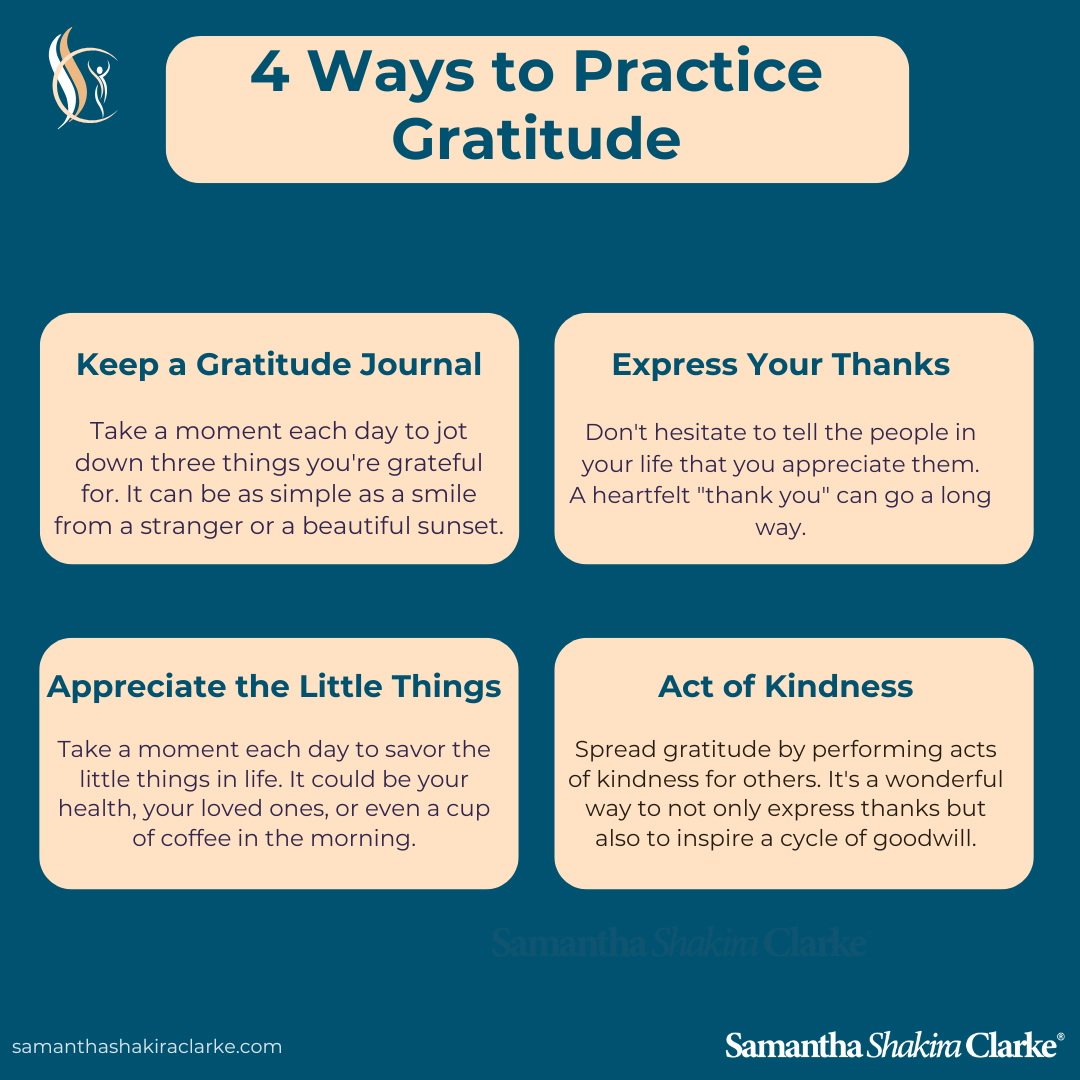 Book Now!
Book Now!Gratitude is more than saying “thank you.” The science of gratitude shows it’s a powerful way to regulate the nervous system, shift the brain’s wiring, and create a sense of safety in the body. When paired with the concepts of Polyvagal Theory and “glimmers,” gratitude becomes not just a mindset, but a pathway back to calm. It’s about finding those small, steady anchors that remind us we are safe, even in uncertain times. And the beautiful thing is, anyone can start, right where they are.
At SSC Corporate & Personal Wellness, we’ve seen how gratitude practices can change not only individuals but also entire workplaces. By teaching leaders and teams to anchor in gratitude and notice everyday glimmers, our team helps organizations move from stress-driven cultures to spaces of connection and resilience.
Polyvagal Theory explains how our nervous system responds to safety, danger, or overwhelm. At its core, it shows how the vagus nerve helps us move between stress and calm. Think of it like an inner compass. When we feel safe, our body softens, our breath slows, and we naturally open to connection, rest, and healing. But when we sense a threat, whether it’s a sharp email, a raised voice, or even an old memory, our system quickly shifts into fight, flight, or freeze to protect us.
This is where gratitude plays a gentle role. Gratitude becomes a signal of safety, reminding the nervous system that not everything around us is dangerous. It’s like a hand on the shoulder that says, “You’re okay. You can exhale now.” Over time, these small reminders guide the body back into regulation instead of leaving us stuck in survival mode. For a deeper dive into nervous system basics, read our blog on How to Regulate Your Nervous System in High-Stress Situations.
If triggers are experiences that spark stress, glimmers are the moments that spark calm. A glimmer might be as small as sunlight through the trees, a song that makes you smile, or a kind word from a coworker.
In simple terms, glimmers are nervous system cues of safety. They remind us that the world is not only made up of stressors, but also filled with small moments of connection and joy. When we train ourselves to notice glimmers, we naturally build the capacity to hold more gratitude, even in stressful seasons.
Examples of daily glimmers include:

The neuroscience of gratitude reveals that practicing thankfulness doesn’t just change how we think, it changes how we feel at the deepest level. Gratitude reshapes both brain and body chemistry, creating space for calm where stress once lived.
Research shows that gratitude increases dopamine and serotonin, the brain’s natural “feel-good” messengers. At the same time, it quiets the amygdala, the part of the brain that’s always on the lookout for threats. In simple terms, gratitude helps the body step away from constant alarm and rest in safety.
You’ve probably felt it before: that warm ease after someone truly sees you, or the quiet peace that comes when you pause to notice what’s still good in your day. That is gratitude doing its work, not just in your mind, but in your nervous system.
Gratitude impacts on the body:
This is where the science of gratitude shines: it helps the nervous system rewire itself toward safety and connection.
Gratitude and glimmers are deeply connected. Gratitude rewires your brain to notice more of the good, while glimmers provide your nervous system with lived proof of safety. Together, they form a kind of inner teamwork; one shapes how you see the world, while the other helps you feel it in your body. This balance between thought and sensation is what makes the practice so powerful.
When practiced together, they create a reinforcing loop: gratitude primes your mind to see glimmers, and glimmers make gratitude feel real in the body. Over time, this back-and-forth practice builds new nervous system pathways that shift you from hyper-vigilance to grounded connection.
Gratitude and glimmers only create real change when they move from concepts into lived experience. While the science of gratitude shows that even short practices reshape the nervous system, consistency is what builds long-term resilience. When gratitude becomes woven into daily rhythms, the nervous system learns to return to calm more quickly. Most importantly, these practices don’t need to be significant or time-consuming; small, steady actions can make the most profound impact.
The best way to strengthen your nervous system is through consistent, small practices. The science of gratitude proves that even short daily moments can create significant change.
Practical ways to integrate gratitude and glimmers:
Quick daily reflection prompts:

SSC Corporate and Personal Wellness always focuses on the idea that small nervous system practices repeated often create lasting resilience.
For individuals with trauma, gratitude can feel layered. A trauma-informed perspective reminds us that gratitude is not about ignoring pain, but about creating balance by noticing safety alongside difficulty. It allows people to honour their story while still opening space for moments of relief. This way, gratitude becomes less of a pressure and more of an invitation.
When gratitude is forced, it can feel hollow or invalidating. However, when grounded in real glimmers of safety, it becomes an authentic tool for healing. Trauma-informed gratitude practices invite patience, gentleness, and self-compassion, allowing the nervous system to rewire slowly and sustainably. Over time, these practices rebuild trust in both the body and the world around us. In this gentle process, gratitude shifts from being a task to becoming a source of true comfort.
Why Gratitude Matters: Gratitude isn’t just a personal practice; it’s something Canadians are actively experiencing in their daily lives. According to the Angus Reid Institute, 79% of Canadians say gratitude makes them feel more connected to others. Similarly, the Canadian Mental Health Association highlights that regular gratitude practice is linked to reduced stress levels and stronger workplace cultures across the country. These findings affirm what the science of gratitude demonstrates globally: gratitude is not only a personal tool, but also a cultural and workplace strength.
Gratitude is not about pretending everything is fine. Instead, it’s about anchoring to nervous system safety even when life feels challenging. The science of gratitude shows us that when paired with Polyvagal Theory and glimmers, gratitude is no longer a fluffy practice; it becomes a nervous system intervention.
If you’re ready to explore how gratitude and nervous system practices can transform your workplace, we’d love to connect. Please email us at team@samanthashakiraclarke.com or book your discovery call here. Let’s build a culture of safety, resilience, and connection together.